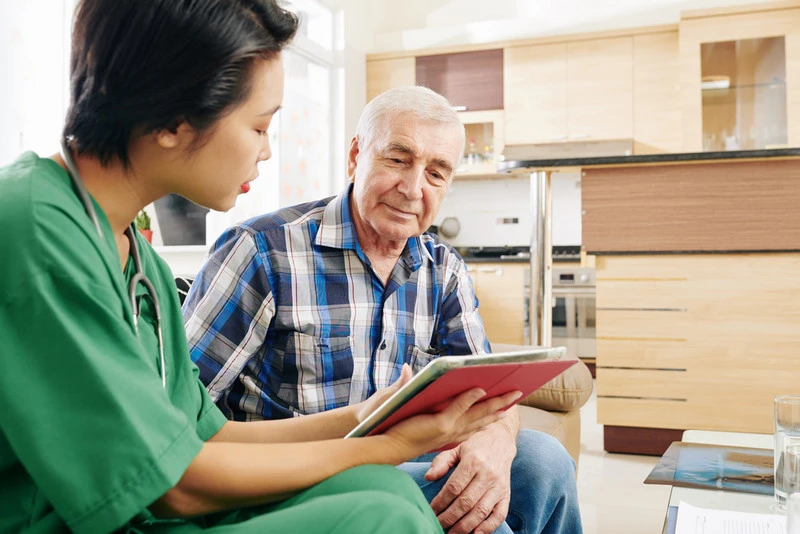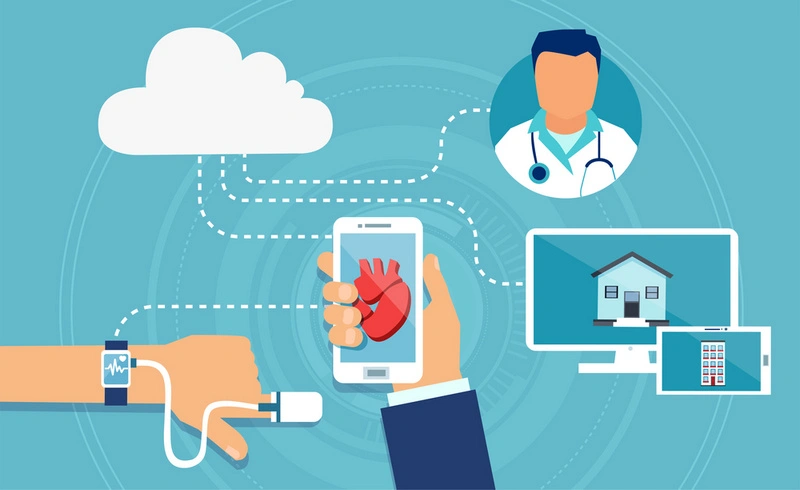Today, thanks to technology advances, home patient monitoring systems have revolutionized patient...
Today, thanks to technology advances, home patient monitoring systems have revolutionized patient care — escalating and improving home care for both chronic as well as acute conditions. These types of cutting-edge systems employ information technology, premier artificial intelligence, innovative sensors, and telecommunication systems. Their objective is to keep track of a patient’s health at home, optimize their treatment, monitor results, and guarantee appropriate actions. Physicians, hospitals, and healthcare facilities leverage this technology allowing patients to monitor vital signs and other bio data.
The benefits of care at home for patients
Clinicians are now embracing home patient monitoring systems due to the wealth of benefits they bring to the table. They not only monitor a patient’s vital sign while away from a healthcare facility but transmit information to providers for assessment, recommendations and instructions.
For the individual, at home patient monitoring devices have experienced a rapid adoption rate due to their significant and wide-reaching benefits.
The benefits of patient home monitoring include the following:
- They are able to stay in their homes.
- They are able to maintain their independence.
- They can control their environment.
- They can save money on medical bills.
- They can learn about their condition — which in turn empowers them.
A recent study has found that the more a person knows about their condition, the more they feel responsible for it. Research has proven that people that monitor their vital signs and understand what each metric details - what the ups and downs mean - are more likely to take action to better their health. People with health literacy, according to the CDC, are more likely to heed a doctor’s recommendation and display greater discipline when it comes to their treatments and regimens.

The benefits of care at home for nurses, caregivers, healthcare providers
Almost 9 out of 10 healthcare providers have indicated that they have invested heavily in home patient monitoring devices according to the American Medical Association. This number is constantly evolving, particularly due to the growing list of insurers for the home patient monitoring devices sector. Practitioners across the world are discovering the value of these devices and services that allow them to not only maintain their quality when it comes to delivering healthcare services but to compete in the marketplace.
Some of the benefits of patient home care monitoring are:
- It allows for a better work-life balance.
- Provides the care that the doctor, nurse, or caregiver needs to take care of themselves.
- Automates certain tasks.
- Mitigates burnout rates in staff members.
- Reduces costs associated with maintaining a practice and offering quality care.
Advantages of acute and chronic care at home
Let’s look at some of the advantages of home health remote patient monitoring:
Improves clinical decisions
By using AI to help aggregate the large amounts of data collected by home patient monitoring devices, doctors have more information and insight into their patients’ status thus allowing them to identify trends and or alter a treatment plan.
Helps patient care plan adherence
Studies have shown that patients that have greater insight into their conditions and can constantly stay on top of their vital signs have greater discipline when it comes to adhering to treatment.
Boost patient revenue
The cost of caring for a patient is significantly reduced thanks to home patient monitoring systems — as opposed to more frequent face-to-face visits with the doctor. This ultimately improves workflow, and productivity, and reduces administrative costs.
Reduces patient expenses
The patient avoids costs associated with in-person visits — such as transportation, taking time off work, parking, childcare, etc.
More access to care
Home patient monitoring systems allow providers to help their patients and clients where they are when they need it. RPM systems can be used to reach patients in rural areas or connect patients to a specialist from across the world.
Prevents the spread of diseases
Home patient monitoring systems, by eliminating the need to constantly visit a hospital or clinic, mitigates the spread of infectious disease. Patients do not come into contact with others and expose themselves to vulnerable situations.
Improves retention
Offering access to innovative care through the use of technology sets a competitive advantage. Today, consumers are placing a high value on innovation and convenience. Studies have shown that customer loyalty and patient retention skyrockets for clinics that offer home patient monitoring systems.
How can a home patient monitoring system help to provide better quality home care?
A home patient monitoring system is a device that can monitor the health of a person in their own home. It is designed to alert medical professionals about any potential emergencies. The system consists of sensors and monitors that are placed on the patient’s body, and data from these sensors are sent to a central station through wireless communication networks.

The system monitors the patient’s vital signs and sends this information to an alarm station, which then alerts any medical professional who might be needed. This type of monitoring can help provide better quality home care because it ensures that any serious changes in the patient’s condition will be noticed by those responsible for them.
They also give patients better access to healthcare teams — by leveraging software and machine learning principles, these types of systems can in fact create bio-profiles. These profiles allow practitioners to create customizable treatment plans and solutions for their patients. They take into account habits, vital signs, unique indicators, etc. Patients are given a treatment plan tailor-made for them. A plan that adheres to their individual traits and demands.
Functions that home health remote patient monitoring perform
The remote patient monitoring system can perform many of the same functions as medical workers. This includes measuring vital signs such as blood pressure, heart rate, and oxygen levels. It also includes monitoring patients for falls, providing reminders to take medications, and tracking symptoms of illnesses such as asthma.